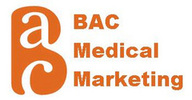But with medical care, the picture is far more complicated. In this case, the outcome as a result of an illness or condition in the absence of medical treatment is EXPECTED to be death and injury (i.e., permanent disability). This is your benchmark. Therefore, it’s often difficult to determine whether a death or injury in this context was the result of treatment failure or it was iatrogenic (as a result of treatment itself) or a combination the two and whether, in retrospect, things could have been done differently that may have improved the odds for the patient.
Notice, I didn’t use the term “preventable”. Medical care does not prevent anything. It maximizes the odds ratios for patient morbidity and mortality. I prefer terms like “this treatment will reduce the likelihood” instead of “this treatment will prevent” such and such. Treatment with bisphosphonates will reduce the likelihood of a fracture. The use of daily aspirin will reduce the chances of a heart attack or stroke. There is however, a remaining chance that a fracture or heart attack will occur despite these treatments.
And every single medical treatment has the potential for iatrogenic harm. The use of blood thinners to reduce the risk of clots in the lower extremities increases the risk of bleeding. The use of invasive monitoring equipment will improve that ability for physicians to make treatment decisions but at the risk of infections, bleeding, and other complications. Ideally, multiple complex treatments are applied in various combinations that try to maximize the odds for recovery while minimizing the likelihood of a poor outcome though this is never assured.
Decades ago, people understood these simple concepts. But through a combination of the success of medical care, the growth of the tort industry, and American obsession with safety, we have come to have unrealistic expectations regarding safety in medical care. One of the biggest reasons for this delusion is that far too many people have lumped medical errors, iatrogenic complications, poor outcomes, and non-medical (i.e., administrative or systemic) errors together into one big messy pile.
This was evident when the Institutes of Medicine (IOM) released a study in 1999 that found that up to 98,000 patients die each year as a result of medical errors (they even included “to err” in the title of the report). But this figure was significantly revised when the methodology of the IOM study was re-evaluated. The IOM study simply looked at hospital charts and depended on the conclusion of the reviewer to determine whether an error was present. However, the accuracy of such methodology was found to be highly variable on further evaluation. It’s like watching two Monday morning ESPN analysts slug it out. Was the interception a result of a bad throw, a bad decision, good defense, a mistake by the receiver, or bad luck, or a combination? Different “experts” can see it differently. This type of study is not helpful (except for lawyers who still quote the study on their web sites).
Amazingly, few people make the distinction between systemic errors and poor outcomes as a result of medical treatment. Systemic errors are errors that should never happen due to things like poor equipment design or defects, improper equipment maintenance and usage, wrong site, wrong procedure, wrong patient errors, poor training, and mismatched blood typing. Unlike medical complications, these adverse outcomes are completely preventable and have little to do with actual medical practice and more to do with administrative problems. Yet, studies and the media continue to lump preventable systemic/administrative adverse events in with medical complications like infections, bleeding, and medication reactions that will occur even under the safest of situations.
The first step is to separate systemic errors from medical adverse outcomes because the expectations and approaches to each can be quite different. Systemic errors are approached much the same way the FAA approaches aircraft accidents. Based on a root cause analysis, equipment is redesigned and/or new or revised procedures are implemented to try and prevent future errors.
Complications as a result of medical treatment requires an understanding and acceptance that this the trade-off we make in order to aggressively treat illness and that a certain finite level of risk will exist even under the most ideal set of circumstances until and unless new technologies or practices are developed to reduce this risk. With this in mind it is more appropriate to measure rates of complications related to the best known techniques in order to set a benchmark.
But even the use of complications or mortality and morbidity rates can be misleading in that different hospitals tend to treat different subsets of patients who may be sicker or healthier than the general population.
Some suggest that better metrics might be how well care is coordinated, how closely evidence-based medical guidelines are adhered to and how short the wait times are. But no matter how we ultimately measure medical safety, we need to start by understanding that there is a significant difference between system/administrative errors and medical complications.

 RSS Feed
RSS Feed































